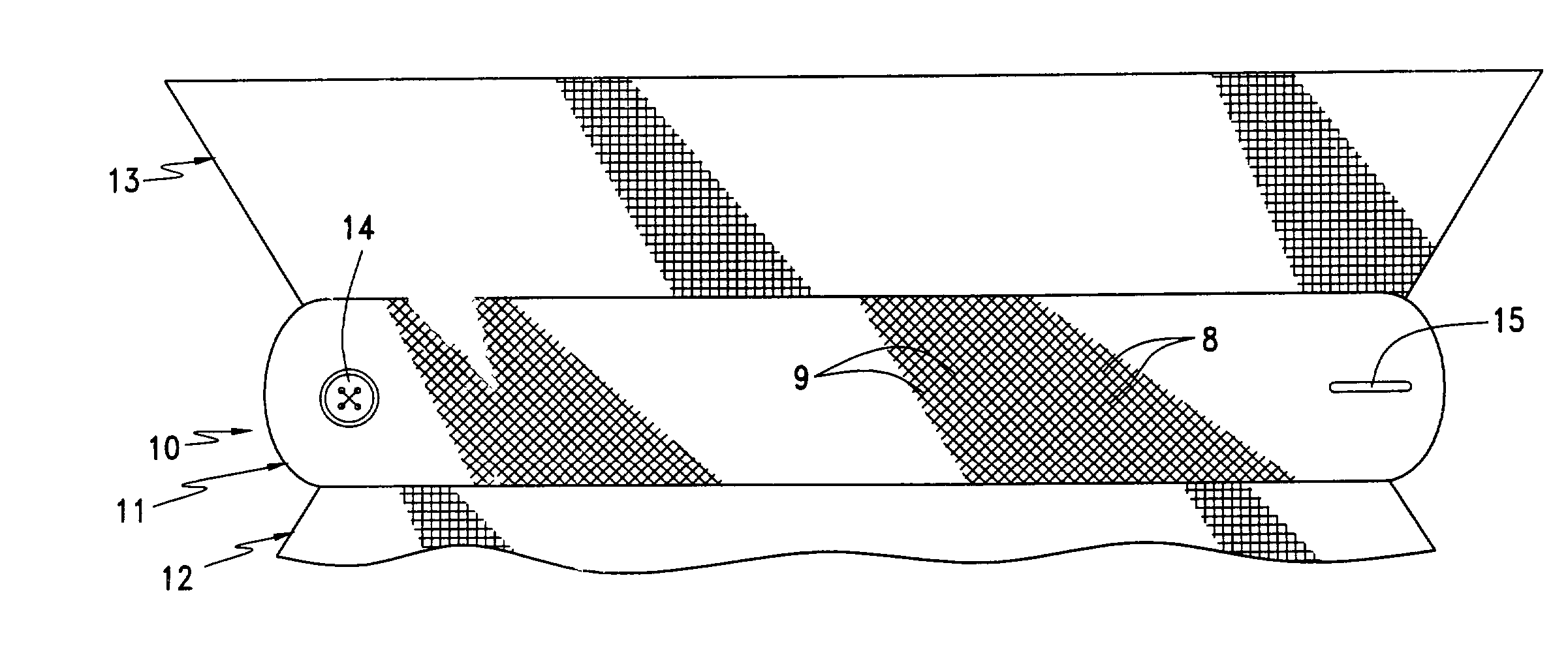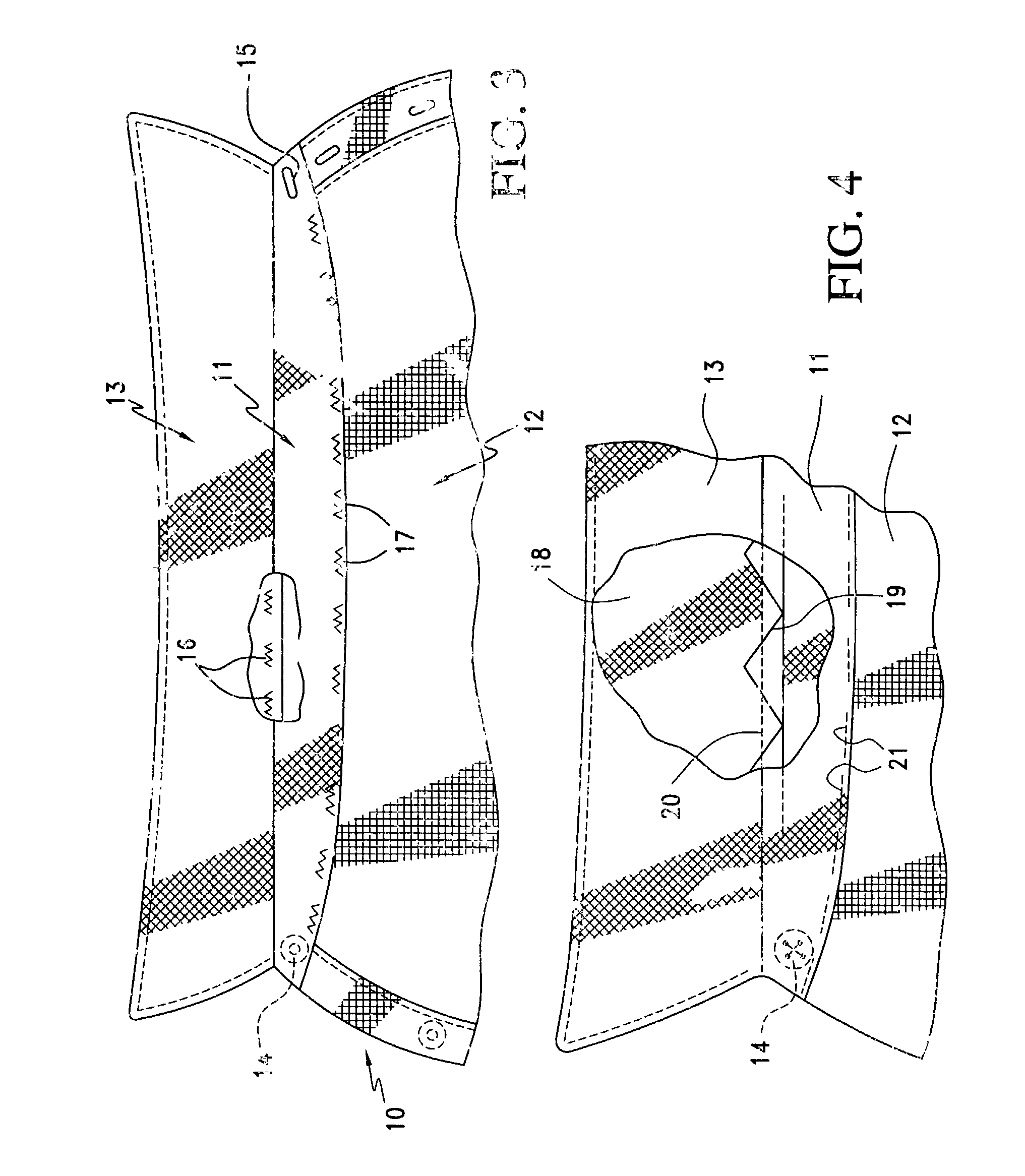Expandable, no-shrink shirt collar
a shirt collar, no-shrink technology, applied in the field of garments, can solve the problems of wearing neck size, difficulty in buttoning the collar button, discomfort or inappropriate neck size, etc., and achieve the effect of effectively adjusting the length of the neckband and preventing noticeable shrinkage of the neckband
- Summary
- Abstract
- Description
- Claims
- Application Information
AI Technical Summary
Benefits of technology
Problems solved by technology
Method used
Image
Examples
second embodiment
[0060]the invention is shown at 30 in FIG. 11. In this form of the invention, the warp threads 6 of the neckband extend perpendicular to the circumference of the neckband, but the weft threads 9 extend diagonally, thus enabling the neckband to stretch in a circumferential direction and resulting in negligible circumferential shrinkage. The fabric forming the shirt body 12 and collar 13 may be of conventional construction, with the threads extending in “north-south” and “east-west” directions.
third embodiment
[0061]A third embodiment is shown at 40 in FIG. 12. In this form of the invention, the fabric has the same construction as in the FIG. 11 embodiment, but small “tabs”41 and 42 of conventional weave are attached to the ends of the neckband where the collar button and button hole are applied. These tabs are visible when a tie is not being worn, or when it is loosened, and by making them of conventional material the appearance of the shirt collar is conventional, but the body of the neckband is stretchable to achieve the beneficial attributes discussed above.
fourth embodiment
[0062]A fourth embodiment is shown at 50 in FIG. 13, wherein the material of the neckband has a plurality of randomly arranged small holes 51 therein. These holes create a net-or mesh-like structure that can yield when a force is applied to it. In this form of the invention, the material can comprise a thermoplastic material, whereby the holes can be formed by a heated implement or laser or other means. Tabs 41 and 42 can be applied to the ends of the neckband, as in the above-described form of the invention, to give a conventional appearance.
PUM
 Login to View More
Login to View More Abstract
Description
Claims
Application Information
 Login to View More
Login to View More - R&D
- Intellectual Property
- Life Sciences
- Materials
- Tech Scout
- Unparalleled Data Quality
- Higher Quality Content
- 60% Fewer Hallucinations
Browse by: Latest US Patents, China's latest patents, Technical Efficacy Thesaurus, Application Domain, Technology Topic, Popular Technical Reports.
© 2025 PatSnap. All rights reserved.Legal|Privacy policy|Modern Slavery Act Transparency Statement|Sitemap|About US| Contact US: help@patsnap.com



